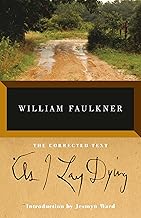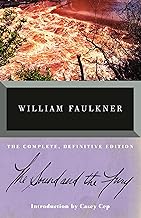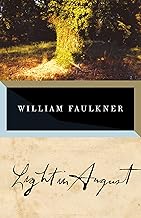
How to Read William Faulkner's Books on Southern Gothic
How to Read William Faulkner's Books on Southern Gothic
Estimated Reading Time: 10-12 minutes
Introduction
William Faulkner, an iconic figure in American literature, is renowned for his profound exploration of the Southern Gothic genre. Born in 1897 in New Albany, Mississippi, Faulkner's upbringing in the American South deeply influenced his writing, infusing it with themes of decay, isolation, and the complexities of human nature. His works often reflect the turbulent history of the South, grappling with issues like race, class, and the haunting legacy of the past.
Faulkner's unique perspective on Southern Gothic is invaluable; he doesn't merely depict the grotesque and the macabre but delves into the psychological depths of his characters, revealing the human condition's fragility. His narrative techniques, such as stream-of-consciousness and fragmented timelines, challenge readers to engage actively with the text, making his works both demanding and rewarding.
In this guide, we will explore three of Faulkner's seminal works: "As I Lay Dying," "The Sound and the Fury," and "Light in August." Each of these novels offers a distinct lens through which to understand the Southern Gothic, showcasing the genre's ability to illuminate the complexities of human existence against the backdrop of a decaying Southern landscape.
Why William Faulkner's Perspective Matters
Faulkner's approach to Southern Gothic is marked by his intricate characterizations and his exploration of time and memory. Unlike other Southern Gothic writers who may focus primarily on the grotesque elements of the genre, Faulkner's works invite readers to empathize with his characters, understanding their motivations and the societal pressures that shape them. His insights into the human psyche, coupled with his innovative narrative techniques, set him apart from his contemporaries.
Moreover, Faulkner's works address the broader cultural and historical contexts of the South, including the legacy of slavery, the impact of the Civil War, and the persistent social hierarchies that define Southern life. His exploration of these themes remains relevant today, as it prompts readers to reflect on the ongoing struggles for identity, belonging, and redemption in a complex world.
Overview of Recommended Books
As I Lay Dying
Overview: "As I Lay Dying" is a poignant exploration of a family's journey to bury their matriarch, Addie Bundren. Told through the perspectives of multiple characters, the novel captures the chaotic and often absurd nature of their quest. Each character's voice reveals their inner struggles, desires, and the burdens of their shared history.
Main Themes and Arguments:
- Mortality and the Human Condition: The novel grapples with the inevitability of death and the varied ways individuals cope with loss.
- Isolation and Communication: Faulkner illustrates the difficulties of genuine communication within the family, highlighting emotional and physical isolation.
- Identity and Self-Perception: Each character's narrative reveals how personal identity is shaped by familial bonds and societal expectations.
Historical Context and Significance: Published in 1930, "As I Lay Dying" reflects the economic hardships of the Great Depression and the changing social landscape of the South. Faulkner's use of stream-of-consciousness narrative mirrors the psychological turmoil of his characters, making it a groundbreaking work in American literature.
Key Insights:
- Embrace Complexity: The fragmented narrative encourages readers to piece together the story, reflecting the complexity of human experience.
- Understand the Burden of Legacy: The characters' struggles with their familial legacy resonate with contemporary themes of identity and belonging.
- Recognize the Absurdity of Life: Faulkner's dark humor underscores the absurdity inherent in human endeavors, prompting reflection on the nature of existence.
Why Read This Book: "As I Lay Dying" is essential for understanding Southern Gothic as it encapsulates the genre's themes of decay, isolation, and the human struggle against fate. Readers interested in the intricacies of family dynamics and the psychological landscape of the South will find this novel particularly enriching.
The Sound and the Fury
Overview: "The Sound and the Fury" chronicles the decline of the Compson family, using a non-linear narrative structure that shifts perspectives and timeframes. The novel is divided into four sections, each narrated by a different character, providing a multifaceted view of the family's disintegration.
Main Themes and Arguments:
- Time and Memory: Faulkner's manipulation of time reflects the characters' fragmented memories and the inescapable nature of the past.
- Social Decay: The Compson family's decline symbolizes the broader decay of Southern aristocracy and the loss of traditional values.
- The Search for Meaning: Each character grapples with existential questions, seeking purpose in a world marked by chaos and despair.
Historical Context and Significance: Published in 1929, "The Sound and the Fury" captures the cultural shifts of the 1920s, including the impact of modernity on Southern life. Faulkner's innovative narrative techniques, particularly in the first section narrated by Benjy, challenge conventional storytelling and invite readers to engage deeply with the text.
Key Insights:
- Explore Different Perspectives: The shifting narratives encourage readers to consider multiple viewpoints, fostering empathy and understanding.
- Reflect on the Nature of Time: The non-linear structure invites contemplation on how past events shape present identities.
- Engage with Existential Questions: The characters' struggles with meaning resonate with contemporary philosophical inquiries about purpose and existence.
Why Read This Book: "The Sound and the Fury" is a cornerstone of Southern Gothic literature, offering profound insights into the human condition and the complexities of family dynamics. Readers interested in narrative experimentation and the exploration of time and memory will find this work particularly compelling.
Light in August
Overview: "Light in August" intertwines the lives of several characters, including Joe Christmas, a man of ambiguous racial identity, and Lena Grove, a pregnant woman searching for the father of her child. The novel addresses themes of race, identity, and the search for belonging in a racially divided South.
Main Themes and Arguments:
- Racial Identity and Ambiguity: Joe Christmas's struggle with his mixed heritage highlights the complexities of race in the South and the societal pressures surrounding identity.
- Isolation and Community: The characters' quests for connection reveal the challenges of finding belonging in a fragmented society.
- The Nature of Evil: Faulkner explores the concept of evil through the characters' actions and societal influences, prompting reflection on moral ambiguity.
Historical Context and Significance: Published in 1932, "Light in August" reflects the racial tensions of the early 20th century and the lingering effects of slavery. Faulkner's nuanced portrayal of race and identity challenges readers to confront uncomfortable truths about the South's history.
Key Insights:
- Examine Racial Constructs: The novel encourages critical reflection on the social constructs of race and identity, relevant in contemporary discussions about race.
- Seek Connection in Isolation: The characters' struggles for belonging resonate with modern experiences of alienation and the human desire for connection.
- Contemplate Moral Ambiguity: Faulkner's exploration of evil prompts readers to reflect on the complexities of human nature and the societal influences that shape behavior.
Why Read This Book: "Light in August" is vital for understanding the Southern Gothic genre's exploration of race and identity. Readers interested in the intersections of personal and societal struggles will find this novel particularly enlightening.
How These Books Complement Each Other
Faulkner's three works collectively address various aspects of the Southern Gothic, each contributing to a richer understanding of the genre. "As I Lay Dying" focuses on familial relationships and the absurdity of existence, while "The Sound and the Fury" delves into the complexities of time and memory within a disintegrating family. "Light in August" expands the conversation to include racial identity and societal constructs, highlighting the pervasive isolation experienced by individuals in a divided society.
Reading these novels together allows for a comprehensive exploration of Southern Gothic themes, showcasing the interconnectedness of personal and societal struggles. Each work builds upon the others, providing a layered understanding of the human condition against the backdrop of the South's haunting landscapes.
Who Would Benefit from Reading These Books
These works are ideal for a diverse audience:
- Students and Academics: Those studying literature, Southern history, or psychology will find rich material for analysis and discussion.
- General Readers Interested in Southern Gothic: Readers seeking to explore the complexities of Southern life and the human experience will find Faulkner's insights invaluable.
- Professionals Seeking Practical Wisdom: Individuals in fields such as psychology, sociology, or cultural studies can gain a deeper understanding of human behavior and societal dynamics.
- Anyone Looking for Personal Growth: Readers searching for meaning and connection will resonate with the characters' struggles and triumphs.
Recommended Reading Order
- Start with: "As I Lay Dying" - This novel's accessible narrative and compelling themes provide a solid introduction to Faulkner's style and the Southern Gothic genre.
- Continue with: "The Sound and the Fury" - Building on the themes of family and memory, this work challenges readers with its innovative structure and deep psychological insights.
- Advanced reading: "Light in August" - This novel expands the conversation to include race and identity, offering a profound exploration of societal constructs and personal struggles.
Tips for Getting the Most Out of Each Book:
- Take Notes: Jot down thoughts and reflections as you read to engage more deeply with the text.
- Discuss with Others: Join a reading group or online forum to share insights and interpretations.
- Explore Secondary Sources: Consider reading critical essays or analyses to enhance your understanding of Faulkner's themes and techniques.
Conclusion
William Faulkner's contributions to the Southern Gothic genre are profound and enduring. His exploration of the complexities of human existence, the haunting legacy of the South, and the intricacies of family dynamics resonate with readers across generations. By engaging with "As I Lay Dying," "The Sound and the Fury," and "Light in August," readers can gain a deeper understanding of the human condition and the societal forces that shape our lives.
We encourage you to explore these works, allowing Faulkner's insights to inspire reflection and growth. As you journey through his narratives, consider how the themes of isolation, identity, and the search for meaning continue to resonate in our contemporary world. Embrace the challenge of Faulkner's prose, and discover the timeless relevance of his ideas.
Tags: #William Faulkner #Southern Gothic #Philosophy #ReadingGuide #ClassicLiterature #Wisdom
Featured Books

As I Lay Dying
by William Faulkner
Published: 1930
A true 20th-century classic from the Nobel Prize-winning author of The Sound and the Fury: the famed harrowing account of the Bundren family’s odyssey across the Mississippi countryside to bury Addie, their wife and mother. As I Lay Dying is one of the most influential novels in American fiction in structure, style, and drama. Narrated in turn by each of the family members, including Addie herself as well as others, the novel ranges in mood from dark comedy to the deepest pathos. “I set out deliberately to write a tour-de-force. Before I ever put pen to paper and set down the first word I knew what the last word would be and almost where the last period would fall.” —William Faulkner on As I Lay Dying This edition reproduces the corrected text of As I Lay Dying as established in 1985 by Noel Polk. Read more

The Sound and the Fury
by William Faulkner
Published: 1929
NOBEL PRIZE WINNER • One of the greatest novels of the twentieth century is the story of a family of Southern aristocrats on the brink of personal and financial ruin. • The definitive corrected text, including Faulkner's AppendixOne of The Atlantic’s Great American Novels of the Past 100 YearsThe Sound and the Fury is the tragedy of the Compson family, featuring some of the most memorable characters in literature: beautiful, rebellious Caddy; the manchild Benjy; haunted, neurotic Quentin; Jason, the brutal cynic; and Dilsey, their black servant. Their lives fragmented and harrowed by history and legacy, the character’s voices and actions mesh to create what is arguably Faulkner’s masterpiece and one of the greatest novels of the twentieth century.“I give you the mausoleum of all hope and desire.... I give it to you not that you may remember time, but that you might forget it now and then for a moment and not spend all of your breath trying to conquer it. Because no battle is ever won he said. They are not even fought. The field only reveals to man his own folly and despair, and victory is an illusion of philosophers and fools.” —from The Sound and the Fury Read more

Light in August
by William Faulkner
Published: 1932
From the Nobel Prize winner—one of the most highly acclaimed writers of the twentieth century—a novel set in the American South during Prohibition about hopeful perseverance in the face of mortality. Light in August features some of Faulkner’s most memorable characters: guileless, dauntless Lena Grove, in search of the father of her unborn child; Reverend Gail Hightower, who is plagued by visions of Confederate horsemen; and Joe Christmas, a desperate, enigmatic drifter consumed by his mixed ancestry.“Read, read, read. Read everything—trash, classics, good and bad, and see how they do it. Just like a carpenter who works as an apprentice and studies the master. Read! You’ll absorb it. Then write. If it is good, you’ll find out. If it’s not, throw it out the window.” —William Faulkner Read more